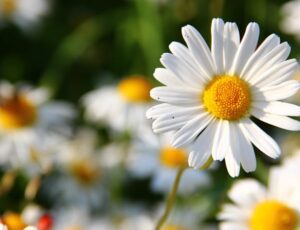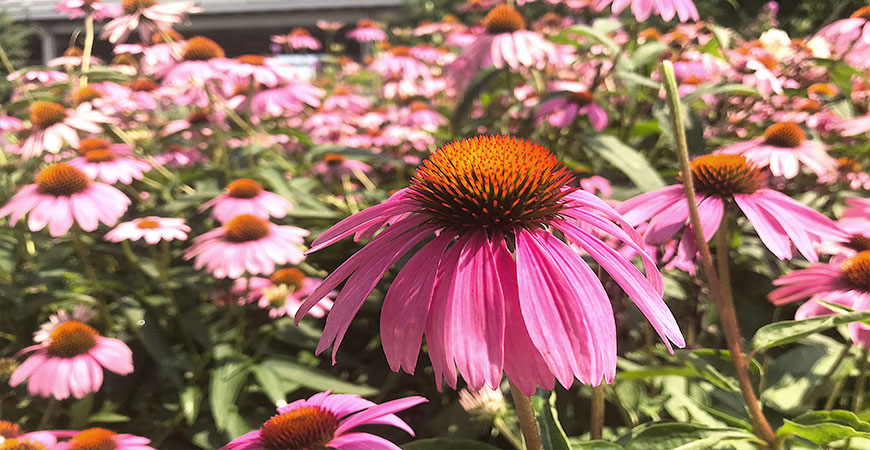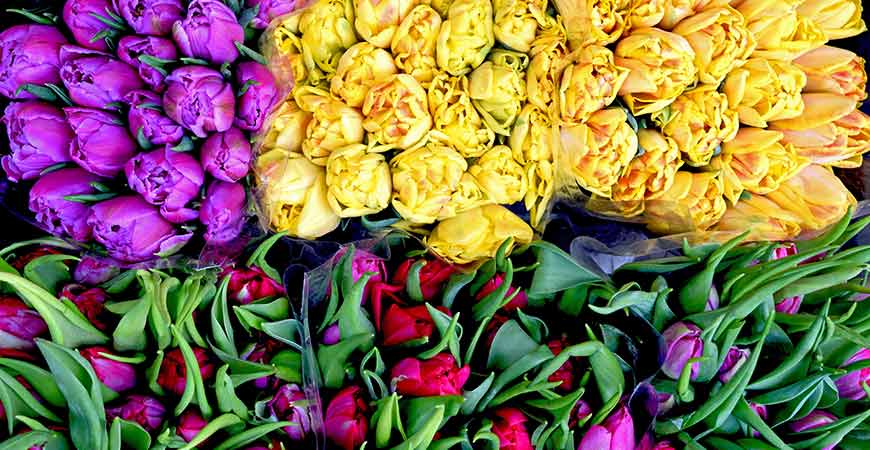
Colorful Carnations: A How To Guide To Growing & Maintaining Beautiful Blooms
What in tarnation are carnations? These elegant flowers with colorful, multi-layered blooms are an eye-catching addition to any garden!
And while we’ve talked about color-changing plants in the past, carnations take it to a whole new level: customization. Carnations don’t change color naturally, but with some food coloring and a dash of science, you can turn a carnation to any hue on the rainbow spectrum.
Are you ready to add these vibrant change-of-color plants to your home? Check out our guide below to keep them blooming all summer long!
What Are Carnations?
We should note that carnations are a diverse flower species with more than 300 different varieties. This diversity means that some carnations are annuals, some biennials, and some are perennials.
With so many varieties to choose from, here are a few of our favorites:
- Chabaud carnations are a commonly grown variety that offers densely packed, aromatic blooms. Their blooms can range in color from reddish pink to yellow-orange to vibrant white.
- Clove pink carnations are perhaps the stereotypical carnation. Their height ranges from six inches to five feet, with vibrant blooms packed with red, pink, or white hues.
- Maiden pink carnations are another pinkish variety. They tend to be used as ground cover due to their low height, thick growths, and year-round beauty.
- Sweet William carnations produce dense clusters of pink blooms. They offer a sweet aroma, are ideal for bouquets, and attract pollinators.
Most carnations tend to thrive in USDA hardiness zones 5 through 9. If you don’t want to click on the link for the map, those zones encompass much of the U.S. except for the upper Plains and Midwest states.
How to Grow Carnations from Seed
Carnations can be grown in many ways. Feel free to start them indoors, sow their seeds directly into the ground, or cultivate them in containers.
Another key point to remember with carnations: they need time. Most carnations don’t produce flowers their first year.
If starting indoors, make sure you have a starter tray filled with potting mix at hand. Gently place seeds on top of the potting soil mix and cover them with a light layer of regular soil.
Mist the seeds regularly to ensure they have adequate moisture. Placing the starter tray into a loose plastic bag can help create a greenhouse-like environment, but you’ll need to keep an eye out for mildew. (If you’re concerned the soil is becoming too moist, take the starter tray out of the bag and let the soil dry some before returning it to a new plastic bag.)
Carnations can be transplanted outside, or their seeds sown directly into the soil two weeks after the final frost date. Seedlings are ready for transplantation once they reach five inches in height.
A few days before planting your carnations, pick a spot in your yard that will receive at least six hours of sunshine adaily Carnations also need a well-draining soil that’s fertile and slightly alkaline — a pH level of around 6.7 is ideal.
A day or two before planting, combine potting mix and a few inches of compost in the area you picked. This will help ensure that the soil is appropriately nutritious.
If transferring from the starter tray, space the seedlings about a foot apart in the soil. Then, gently press down on the soil around the seedling and water regularly.
If sowing seeds directly into the ground, place them about a quarter inch deep in the soil and then lightly cover them with topsoil. As they grow, you may need to thin the seedlings to give them enough room to prosper — 10 inches of space in every direction tends to work best.
How to Grow Carnations from Cut Flowers
Carnations can also be grown from cut flowers. This means that as carnations grow, you can restart the growth cycle around your yard or offer cut carnations (sometimes called pipings) to friends or neighbors to add to their garden.
You’ll need to start by identifying a healthy, non-flowering shoot that’s around four to five inches tall. Snip it off and pinch off any leaves from the bottom half of the stalk.
Using a sharp knife, make a tiny cut (a couple of millimeters or just less than a tenth of an inch) in the spot where the leaves join the stem. Remove the lowest leaf pairings.
Then, fill a pot with multi-purpose compost. Push the cuttings in so they’re no more than half an inch deep and so that their leaves do not touch any other cutting.
Soak the compost and cover it with a plastic bag to create a greenhouse-like environment. Then place the pot on a windowsill with adequate sunlight to root.
Remove the plastic bag every few days to allow fresh air to circulate. This will also reduce the odds of fungal growth.
If any of the pipings develop new leaf growth, it’s time to remove the plastic bag permanently.
Within a few weeks, you should see the cuttings experience significant growth. At this point, they are ready to be transplanted outside or into individual pots.
Keep Carnations Blooming All Summer Long
Carnations aren’t typically considered fussy flowers. However, they do require some maintenance to keep them blooming all summer long.
Water new carnation plants deeply at least once a week. Once the roots are established, reduce watering to only when the top inch of soil is dry.
Morning watering offers a lot of benefits to carnations. It prevents rapid evaporation on hot days as well as mildew growth on the plant’s leaves.
A layer of mulch can also prove beneficial. It will help maintain consistent temperature and moisture levels while shielding the area from weed growth.
Consider companion planting to keep pests away. Plants that keep away the carnation’s natural predators — aphids and mites — will be especially helpful.
Deadheading will help air circulate around the flowers and encourage an extended blooming season. Carnations typically bloom in late spring, so pruning spent flowers can help ensure you have carnation blooms all summer.
Make Your Carnation Change Color
Many carnations are naturally vivid. Even the bright white flowers offer their own glimmer of vibrancy.
However, if you’ve got white carnations and find yourself wishing you could swap them out for a different hue, don’t fret. Instead, use science!
This is a great summer-time project for kids and green thumbs alike. It requires little investment but offers a colorful return.
To start, get these items ready:
- White carnations
- Clear containers (vases or plastic cups are perfect)
- A cutting instrument (knife or scissors)
- Food coloring (an assortment of colors can help you build a rainbow bouquet)
- Water
Once you’ve prepped everything, fill each container with water until it is around three-quarters full. Then, add 20 to 30 (or more) drops of food coloring to each container. (If you’re using this as a science experiment with your kids, leave one container sans food coloring to serve as the “control” group.)
Cut the carnation stems diagonally. Wait until the very last second to do this, as fresh cuts allow for better water absorption.
Place a single carnation into each container.
Within a few hours, you’ll begin to see the colorful water begin its journey up the carnation’s stem. Within a few days, the carnation will have taken on an entirely new color.
There’s plenty of room to experiment further.
What happens if you place a newly colored carnation into a container with a different color? Or you could see what happens if you cut the carnation in half lengthwise and then place each half in a different color.
When you combine science with summer, the fun is practically endless!
Start Your Colorful Carnation Garden Today!
Every home and garden could use a pop of vibrant color. Consider carnations for flowers that are vivid, bright, and ready for science!













